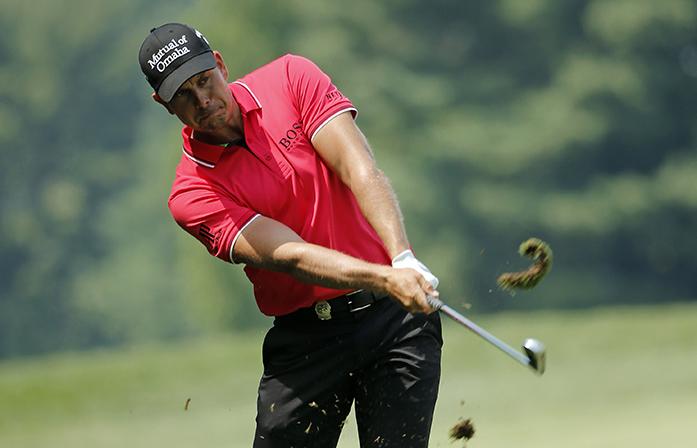By Blake Dowson
In some ways, we were kind of spoiled during the past two major championships of the year.
Phil Mickelson and Henrik Stenson’s battle across the pond in the British Open was one for the ages. It was two heavyweights of the game going back and forth, and it was a lot of fun to watch.
But at the end, it was a little disappointing, right? Didn’t we all want to see Mickelson win one more epic major championship to cement his legacy as one of the best golfers of his generation? He was so close, he played so well, and then it was just one more runner-up finish.
It was more of the same this weekend at the PGA Championship at Baltusrol, with Jimmy Walker parring the 72nd hole of the weekend to beat Jason Day by one stroke.
You have never heard of Jimmy Walker, have you? But you have heard of Day, because he is the world No. 1, he has won eight tournaments in the past two years, and he has made more than $33 million during his time on tour.
And Day was so close, just like Mickelson. There was so much intrigue late on Sunday. Walking to the 18th tee for his final hole of the tournament, Day was down 3 strokes to Walker. The world No. 1 ended up landing on the green in 2 on the par 5 — thanks to a monster iron shot that he hit 258 yards — and ended up sinking a 13-foot putt for an eagle to get him within 1 shot of the lead.
That’s what we want to see at major championships: the best player in the world doing things only two or three players in the world can do.
But then, quite anticlimatically, Walker parred the final hole to win his first major championship.
With Walker winning, it made four-straight first-time major winners in this calendar year.
Is that good for golf? Does that spring the sport forward after guys such as Day, Jordan Spieth, and Rory McIlroy pumped so much excitement into it during these past two years?
The answer, for me, is no. Parity does not do the game a thing of good.
Golf needs story lines; it needed Tiger Woods dominating the field each and every week, it needed McIlroy taking over as the dominant player after Woods fell from grace, and it needed Spieth to emerge as a young megastar during these past two years.
The game needs superstars to consistently win the biggest tournaments for interest to stay high, and this year didn’t exactly bring that.
The TV ratings at the 2015 Masters were the highest they had been in years, with Spieth winning the tournament. They were down this year, when Englishman Danny Willett won the green jacket.
One hundred fifteen million people tuned in last year on Sunday of the U.S. Open to watch Spieth win his second major of the year. Fox’s ratings had a rather large dip this year with Dustin Johnson winning his first-ever major.
Woods revolutionized the game when he was in his prime. More people than ever before in the sports history tuned in to watch him don his red Nike shirt on Sunday of every major. When Woods was playing, a seemingly boring sport to watch on TV became must-see television.
It was the same exact way when McIlroy was winning all the time, and it was that way when Spieth was winning all the time.
In sports such as football, basketball, and baseball, parity is needed. Teams become public enemy No. 1 when it looks like they might start to dominate the game. It happened with the Golden State Warriors this season.
But golf is different. It needs a player to continue to build on his legacy each year, and that just didn’t happen in 2016.



